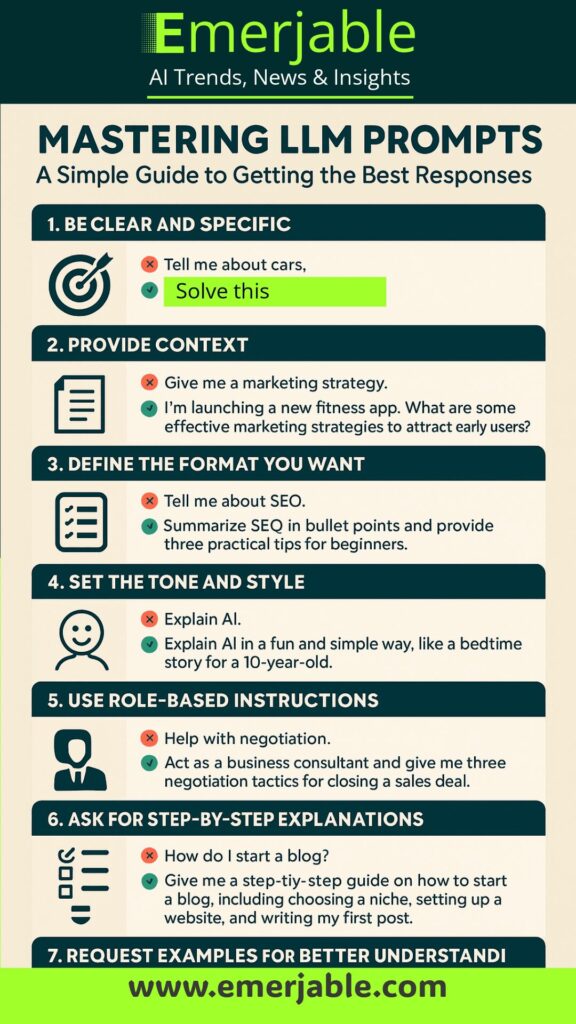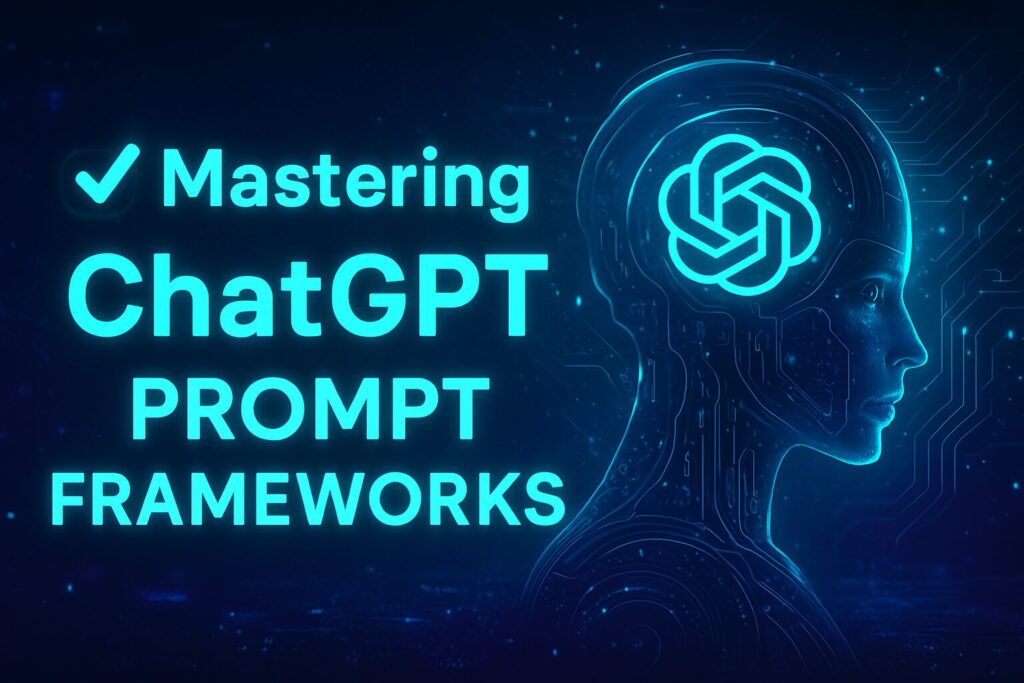Using a Large Language Model (LLM) like ChatGPT can be powerful, but only if you know how to ask the right questions. The way you structure your prompt determines the quality of the response. Here’s a simple guide to crafting better prompts so you get the most useful, accurate, and relevant answers.
1. Be Clear and Specific
If your prompt is too vague, you’ll get a broad or unclear response. Instead, be precise about what you need.
- Example:
“Tell me about cars.” (Too general)
“Explain how electric cars work and their advantages over gas-powered cars.” (Specific and clear)
2. Provide Context
LLMs perform better when they understand the background of your request. Adding context helps the AI tailor its response to your needs.
- Example:
“Give me a marketing strategy.” (Lacks context)
“I’m launching a new fitness app. What are some effective marketing strategies to attract early users?” (Provides context)
3. Define the Format You Want
If you want a response in a certain style (list, paragraph, table, etc.), specify it in your prompt.
- Example:
“Tell me about SEO.”
“Summarize SEO in bullet points and provide three practical tips for beginners.”
4. Set the Tone and Style
If you need a response in a particular tone—formal, casual, fun, or professional—mention it.
- Example:
“Explain AI.”
“Explain AI in a fun and simple way, like a bedtime story for a 10-year-old.”
5. Use Role-Based Instructions
LLMs can simulate different roles to give more tailored responses.
- Example:
“Help with negotiation.”
“Act as a business consultant and give me three negotiation tactics for closing a sales deal.”
6. Ask for Step-by-Step Explanations
If you’re learning something new, asking for a step-by-step breakdown can be helpful.
- Example:
“How do I start a blog?”
“Give me a step-by-step guide on how to start a blog, including choosing a niche, setting up a website, and writing my first post.”
7. Request Examples for Better Understanding
Asking for examples makes the response more practical and easier to apply.
- Example:
“Tell me about leadership.”
“Explain what makes a great leader and give two real-world examples of famous leaders with different leadership styles.”
8. Refine Your Prompt If Needed
If the response isn’t what you expected, you can improve your prompt:
- Ask for more details: “Can you expand on this point?”
- Request a different perspective: “Give me an alternative explanation.”
- Specify the depth: “Summarize this in two sentences” OR “Provide an in-depth analysis.”

Final Thought: Experiment and Iterate
The more you practice, the better you’ll get at crafting prompts. Don’t be afraid to tweak your questions and try different approaches to get the best results.
Would you like a cheat sheet summarizing these principles?
Also Check Google’s Gemini 2.5 recent update
Learn more on Open AI Academy




 What is a Prompt Structure Framework?
What is a Prompt Structure Framework?